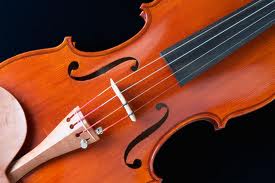Giovanni Battista Vitali Sheet Music
 Giovanni Battista Vitali (18 February 1632 – 12 October 1692) was an Italian composer and violone player.Vitali was born in Bologna and spent all of his life in the Emilian region, moving to Modena in 1674. His teacher in his early years was probably Maurizio Cazzati (1616–1678), maestro di cappella at the main church in Bologna, San Petronio Basilica from 1657 to 1671.The first documented evidence of Vitali’s musical activities appears in the records of the San Petronio orchestra for 1658, when he is listed under the title ‘Violoni’, referring to the cello/bass instrument that he played (to be discussed below).
Giovanni Battista Vitali (18 February 1632 – 12 October 1692) was an Italian composer and violone player.Vitali was born in Bologna and spent all of his life in the Emilian region, moving to Modena in 1674. His teacher in his early years was probably Maurizio Cazzati (1616–1678), maestro di cappella at the main church in Bologna, San Petronio Basilica from 1657 to 1671.The first documented evidence of Vitali’s musical activities appears in the records of the San Petronio orchestra for 1658, when he is listed under the title ‘Violoni’, referring to the cello/bass instrument that he played (to be discussed below).Vitali remained in the orchestra until 1673, when he took up an appointment as maestro di cappella at the chapel of the Confraternità del Rosario, Bologna. His first publication, Opus 1 (1666), tells us that he was a member of the Accademia dei Filaschisi. This musical institution, which had been established in 1633, disbanded in 1666 when most of its members joined the Accademia Filarmonica. Vitali is also listed as a member of the Accademia Filarmonica in 1666, the year of its founding. The academy archives record various details of its members, including where they came from (if not from Bologna) and their dates of birth and death. Vitali’s death date is here recorded as 12 October 1692.










